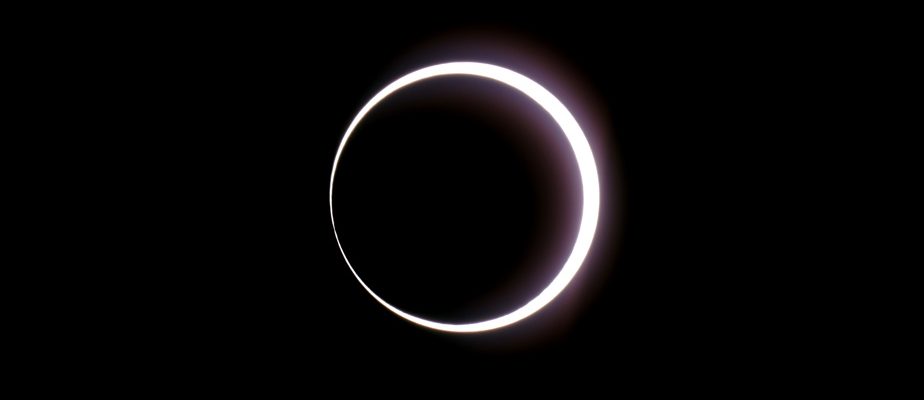(Albuquerque) Millions of people were able to observe an annular eclipse for the first time on Saturday, the Moon having covered the Sun for a few minutes, revealing a “ring of fire”.
The eclipse should then be visible in several countries in Central and South America (Mexico, Colombia, Brazil, etc.).
During an annular eclipse, the Moon is a little further from Earth than during a total eclipse, and so its diameter appears, from our point of view, slightly smaller than that of the Sun – which produces this orange “ring” .
The event is also a scientific opportunity for NASA, which plans to closely study changes in temperature and atmosphere.
To admire it, special certified glasses must be worn, even for those further away from the optimal observation zone, who will therefore only see a partial eclipse, insisted the American space agency.
The eclipse was visible shortly after 9 a.m. local time (12 p.m. Eastern time) in the US state of Oregon on the Pacific coast, and crossed the United States from northwest to south , until appearing almost half an hour later in the sky over South Texas.

PHOTO LM OTERO, ASSOCIATED PRESS
The annular solar eclipse is seen from Richardson, Texas.
In Albuquerque, a large annual hot air balloon festival taking place at the same time produced some sensational images.
This eclipse, “it’s majestic,” described Shannon Cozad, who came to the festival and said she was “amazed.”
For Mubaraq Sokunbi, 8 years old, “it’s like a kind of black hole! “.
“The Moon covers the Sun and then there is a circle around it,” adds the boy who came with his family to the festival.
Residents of southwestern British Columbia were in the best place to view this partial solar eclipse Saturday morning.
The eclipse began at 8:08 a.m. local time, peaked at about 9:20 a.m., and ended at 10:38 a.m. in Vancouver, although the weather forecast may have been disappointing for viewers.
Environment Canada predicted clouds and showers across much of southwestern British Columbia, where the moon blocked 70 to 80 per cent of the sun.
This partial eclipse was also visible in Quebec “between 12:11 p.m. and 2:23 p.m.”, indicated the Astronomical Society of the Planetarium of Montreal (SAPM) on its website.
6.5 million on the route
Unfortunately, clouds hovered over parts of Oregon and Texas, according to the US National Weather Service, obscuring the phenomenon.
In total, the eclipse could be observed in parts of eight American states.
The “ring of fire” corresponding to the circumference of the Sun lasts from a few tens of seconds to more than 5 minutes, depending on the location of observation.
In the United States, “more than 6.5 million people live in the path of the eclipse,” explained Alex Lockwood of NASA at a press conference. Some 68 million people live within about 300 kilometers of the route, or just a few hours’ drive, she added.
NASA broadcast a video program on its website, with live broadcasts from New Mexico and Texas.
Sounding rockets
The event also served as a dress rehearsal before a total eclipse planned for April 2024 over the United States.
These two eclipses, annular and total, “are going to be absolutely breathtaking for scientific research,” said Madhulika Guhathakurta, a scientist in NASA’s heliophysics department.
“During a solar eclipse there is a significant drop in the density of electrons in the ionosphere”, a layer of the atmosphere, she explained.
And “even if the atmospheric effects of solar eclipses have been studied for more than 50 years, many questions persist,” she stressed. For example, “how much of the ionosphere is affected, for how long, and why is this the case?” »
NASA had prepared the launch of three sounding rockets from the White Sands military base in New Mexico: one before the eclipse, one during, and a final one after the event.
The goal: to collect data on the magnetic and electric fields, the density of electrons, and the temperature, which dropped because of the shadow produced by the Moon. This could also have destabilized the animals.
A total eclipse took place in 2017 in the United States. After that of April, the next one will take place in 2044 in the country.
A total eclipse will also be visible in Spain in August 2026.
The Sun is about 400 times larger than the Moon, but is also 400 times farther away, which is why the two stars appear similar in size from Earth.
With The Canadian Press
